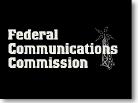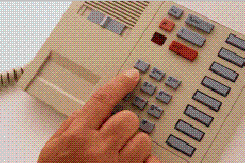|
FCC calls for phone help
|
 |
May 27, 1999: 2:26 p.m. ET
Panel floats plan to address pressing demand for telephone numbers
|
NEW YORK (CNNfn) - Faced with a growing dearth of area codes nationwide, the Federal Communications Commission proposed revamping the way it allocates telephone numbers Thursday.
The proposal, discussed at the FCC's open meeting in Washington, would require telecommunications carriers to return all unused numbers while significantly reducing the amount of numbers that are doled out at one time.
The FCC recommendation also considered the idea of introducing 10-digit dialing for all local calls throughout the country. Under such a plan, you would automatically have to dial 10 digits instead of seven to call your neighbor who may or may not have a different area code than you do.
Such a concept is considered confusing for customers since regions would no longer be divided by area codes, but it extends regulators greater flexibility in keeping up with the demand for new numbers.
A separate proposal would revise how telephone rates are calculated in certain states -- a proposal that could ultimately raise fees paid by individual phone companies and, therefore, consumers.

Your fingers may have to do a little more walking if certain aspects of a new FCC proposal are approved.
The plan grew out of concerns that at the current pace, the nation will face a severe shortage of available telephone numbers within the next 10 years -- a problem aggravated by the demand for new numbers for Internet, cellular and paging services.
As little as eight years ago, the United States had 119 area codes in service. Today, that number stands at 215, with more than 70 area codes having just about used up their available combinations.
California alone expects to go from having 13 area codes in 1992 to 41 by 2002.
FCC officials estimate if the current numbering plan - in which most regions dial seven digits for local calls and 10 digits for long distance - remains in effect and is allowed to exhaust prematurely, one or more digits will have to be added on to the current ten-digit dialing pattern at a cost of up to $150 billion.
"These costs are real," said FCC Chairman William E. Kennard, in a written statement. "If we can take responsible actions now, we can avoid confronting a catastrophe in the future."
FCC officials hope to alleviate the problem by dramatically reducing the size of the 10,000-number blocks currently assigned to carriers requesting new numbers and requiring them to use up already assigned numbers before getting new ones.
FCC officials estimate most carriers use "significantly less" than half the 10,000-number blocks they are currently assigned. FCC officials are considering reducing that number to blocks of 1,000. Taking such action alone could extend the current numbering plan by more than 75 years, the department estimated.
That might be enough to stave off 10-digit local dialing, which is likely to generate adverse public reaction, although it is already being used in a handful of states.
Lockheed Martin Communication Industry Services, the Lockheed Martin (LMT) subsidiary that assigns phone numbers for the FCC, is supporting a revision of the current system.
|
|
|
|
|
 |

|

